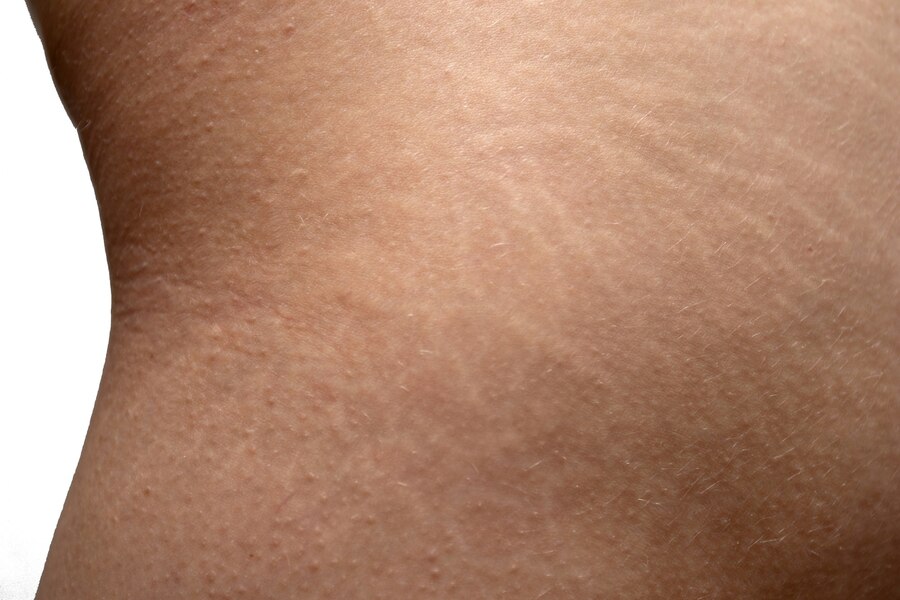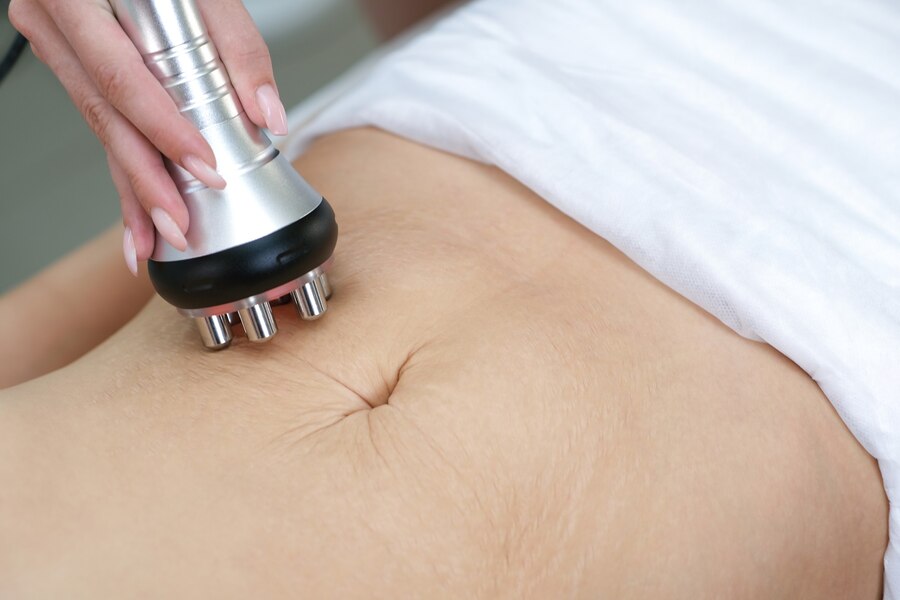Microneedling for Stretch Marks: Does It Really Work?

Microneedling for Stretch Marks: Does It Really Work?
Microneedling has gained significant attention as a potential solution for one of the most common skin concerns: stretch marks. These streaks, often a result of rapid weight gain, pregnancy, or growth spurts, can leave many feeling self-conscious about their appearance. But amidst the myriad of treatments, does microneedling truly offer a viable remedy? This article delves into the science behind microneedling, exploring its efficacy in reducing the appearance of stretch marks. From understanding how the procedure works to examining real-life results, we aim to provide clarity on whether microneedling is the answer to smoother, more even-toned skin.
The Rise of Microneedling
In recent years, microneedling has emerged as a popular cosmetic procedure hailed for its effectiveness in addressing various skin concerns. Initially developed to treat scars and wrinkles, its application has extended to tackling stretch marks, much to the delight of individuals seeking smoother, more uniform skin. This rise in popularity can be attributed to several factors, including advancements in technology, increased accessibility to professional treatments, and a growing demand for non-invasive yet effective skincare solutions. With celebrities and social media influencers often endorsing its benefits, microneedling has become a buzzword in the realm of skincare, prompting many to explore its potential for achieving desired aesthetic improvements.
Understanding Stretch Marks
Stretch marks, medically known as striae distensae, are a common dermatological concern characterized by streaks or lines on the skin’s surface. These marks typically appear when the skin is subjected to rapid stretching or changes in shape, causing the collagen and elastin fibers to rupture. Commonly occurring during puberty, pregnancy, rapid weight gain or loss, and growth spurts, stretch marks can affect individuals of all ages and skin types. While they pose no health risks, their presence can significantly impact self-esteem and body image. Understanding the underlying mechanisms of stretch mark formation is crucial for developing effective treatment strategies, such as microneedling, aimed at minimizing their visibility and improving skin texture.
Common Causes and Concerns
Stretch marks can manifest due to various physiological and environmental factors, with some individuals being more predisposed to their development than others. Rapid weight gain or loss, hormonal changes during puberty or pregnancy, genetic predisposition, and certain medical conditions such as Cushing’s syndrome or Marfan syndrome are common causes of stretch marks. Additionally, lifestyle factors such as poor diet, inadequate hydration, and excessive sun exposure can exacerbate their appearance. Beyond their physical manifestation, stretch marks can also evoke emotional distress and psychological concerns, impacting an individual’s confidence and self-image. Addressing these concerns requires a comprehensive approach that considers both the physiological and psychological aspects of stretch mark management.
Exploring Microneedling’s Mechanism
Microneedling operates on the principle of controlled skin injury and subsequent regeneration, stimulating the skin’s natural healing processes to improve its appearance. During the procedure, a device equipped with fine needles creates micro-injuries in the skin’s surface, triggering the production of collagen and elastin fibers. This increase in collagen and elastin helps to plump the skin, smooth out wrinkles and fine lines, and improve overall skin texture. Additionally, microneedling enhances the penetration and efficacy of topical skincare products, maximizing their benefits. The precise depth and density of the needles can be adjusted according to the specific concerns being addressed, making microneedling a versatile treatment option for various dermatological conditions, including stretch marks.
Skin’s Healing Response
Following microneedling, the skin undergoes a series of reparative processes aimed at restoring its integrity and function. Immediately after the procedure, the body initiates the inflammatory phase, characterized by increased blood flow and the release of growth factors and cytokines. This inflammatory response plays a crucial role in stimulating collagen synthesis and promoting tissue remodeling. Over the subsequent weeks, the proliferative phase begins, during which fibroblasts migrate to the site of injury and deposit new collagen and elastin fibers. Finally, the remodeling phase involves the maturation and reorganization of the newly formed tissue, resulting in improved skin texture and appearance. Understanding these healing mechanisms is essential for optimizing the outcomes of microneedling treatments and managing expectations regarding the timeline of results.
Clinical Studies: What Do They Show?
Numerous clinical studies have investigated the efficacy and safety of microneedling for various dermatological concerns, including stretch marks. While results may vary depending on factors such as the device used, treatment parameters, and individual skin characteristics, the overall findings are promising. Several studies have reported significant improvements in the appearance of stretch marks following microneedling treatments, with reductions in size, depth, and pigmentation observed. Additionally, microneedling has been shown to enhance the penetration and efficacy of topical agents commonly used in conjunction with the procedure, further augmenting its therapeutic benefits. However, it’s essential to note that more extensive research is needed to establish standardized protocols and optimize treatment outcomes consistently.
Microneedling vs. Other Treatments
When it comes to addressing stretch marks, microneedling is just one of several treatment options available. Other modalities, such as laser therapy, chemical peels, topical creams, and surgical procedures, may also be employed depending on the severity and characteristics of the stretch marks. While each approach has its unique advantages and limitations, microneedling offers several distinct benefits, including minimal downtime, reduced risk of pigmentation changes, and versatility in treating various skin types and ethnicities. Additionally, microneedling is well-tolerated by most individuals and can be performed on different areas of the body, making it a convenient option for those seeking comprehensive skin rejuvenation.
Safety Considerations
Microneedling is generally considered safe when performed by a qualified and experienced practitioner using appropriate techniques and equipment. However, like any cosmetic procedure, it carries certain risks and considerations that should be discussed with a healthcare provider beforehand. Potential side effects may include temporary redness, swelling, bruising, and minor discomfort during or after the treatment. In rare cases, more serious complications such as infection, scarring, or changes in pigmentation may occur, particularly if proper hygiene protocols are not followed or if the treatment is administered incorrectly. Patients with certain medical conditions or skin sensitivities may require special precautions or may not be suitable candidates for microneedling, emphasizing the importance of a thorough evaluation and personalized treatment plan.
Preparing for the Procedure
Before undergoing microneedling treatment for stretch marks or any other concern, it’s essential to adequately prepare both physically and mentally. This may involve scheduling a consultation with a qualified skincare professional to discuss treatment goals, expectations, and any concerns or questions you may have. During this consultation, the practitioner will assess your skin type, medical history, and suitability for microneedling, as well as provide personalized recommendations for pre-treatment care. Depending on your skin’s condition and individual needs, pre-treatment protocols may include avoiding certain skincare products, medications, or activities that could increase the risk of adverse effects or interfere with the procedure’s efficacy.
What to Expect During Microneedling
Microneedling is typically performed in a clinical setting by a trained aesthetician or healthcare provider. Before the procedure begins, the skin is thoroughly cleansed and prepared, and a topical numbing cream may be applied to minimize discomfort. Once the skin is adequately numbed, the microneedling device is gently passed over the treatment area, creating controlled micro-injuries in the skin’s surface. Depending on the specific concerns being addressed and the device used, the depth and density of the needles may vary. While some individuals may experience mild discomfort or a sensation of pressure during the procedure, it is generally well-tolerated, and the numbing cream helps to minimize any potential discomfort.
Post-Treatment Care
After microneedling treatment, it’s crucial to follow post-procedure care instructions provided by your skincare professional to ensure optimal results and minimize the risk of complications. This may include avoiding sun exposure, wearing sunscreen daily, and refraining from using harsh skincare products or exfoliants for a specified period. Additionally, it’s essential to keep the skin well-hydrated and moisturized to support the healing process and promote collagen synthesis. Depending on your skin’s response and the intensity of the treatment, you may experience temporary redness, swelling, or mild flaking, which typically subside within a few days to a week.
Managing Discomfort and Downtime
While microneedling is generally well-tolerated, some individuals may experience mild discomfort or downtime following the procedure. This may include redness, swelling, and sensitivity in the treated area, which are normal and typically resolve within a few days. To manage any discomfort or irritation, it’s essential to follow post-treatment care instructions carefully, including applying soothing skincare products and avoiding activities that could exacerbate inflammation. Additionally, avoiding strenuous exercise, hot baths or showers, and excessive sun exposure can help to minimize downtime and promote optimal healing.
Microneedling stands as a promising solution for those seeking to diminish the appearance of stretch marks and achieve smoother, more radiant skin. Backed by scientific research and real-life success stories, this procedure offers hope and confidence to individuals striving to feel comfortable and empowered in their skin. If you’re ready to embark on your journey towards renewed confidence and beauty, contact American Laser Med Spa at 915-760-5123. Let us help you transform lives by making you feel young, beautiful, and confident, all while fostering a supportive community dedicated to exceptional patient care.







